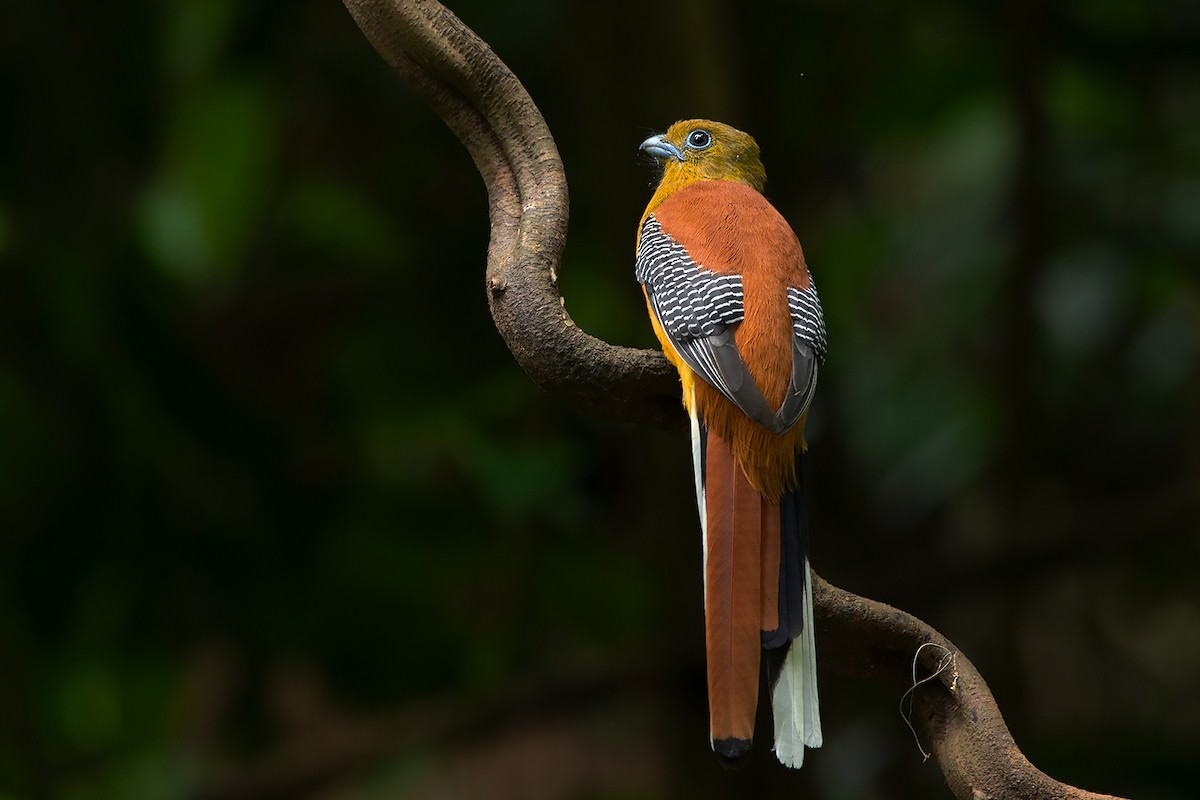Orange-breasted Trogon
A species of Asian trogons Scientific name : Harpactes oreskios Genus : Asian trogons
Orange-breasted Trogon, A species of Asian trogons
Botanical name: Harpactes oreskios
Genus: Asian trogons
Content
Description General Info
 Photo By Ayuwat Jearwattanakanok
Photo By Ayuwat Jearwattanakanok Description
The orange-breasted trogon is a medium-sized bird that measures between 25-31 cm in length and weighs about 49-57 g. The males have a dull olive-yellow head and a rufous-chestnut colour that extends from the upperparts to the upperpart of the tail. Underneath the tail the body is black and white. Primaries are black with white vertical bars and wing coverts are barred black. There is a yellow-orange lower breast which becomes lighter as it approaches the vent. A blue eye ring is present. The females has a more grey-brown head and upperparts, and a grey breast with yellow at the belly and vent. Both genders have grey feet with two toes pointing backwards, a common trait among trogons. The subspecies can differ slightly from each other; uniformis and dulitensis are smaller than the other subspecies and have, respectively, a more yellow or green breast; nias has a darker crown and a larger bill that the others; stellae has a paler breast and longer tail. 
Size
26 cm
Nest Placement
Tree
Feeding Habits
Orange-breasted Trogon primarily eats insects, employing a 'sally-stall' technique from perches 4.3-13.7m high to catch prey like Phasmatodea, Orthoptera, and Lepidoptera larvae.
Habitat
The orange-breasted Trogon typically resides in the mid-stratum and lower canopy of dense vegetation, favoring primary semi-evergreen, evergreen forests, and swamp forests. The species also adapts to disturbed areas with significant bamboo presence, open dry forests, mixed deciduous woodlands, and bamboo thickets. Additionally, orange-breasted Trogon may inhabit tree clusters in proximity to more extensive forest landscapes. While selective in its habitat, orange-breasted Trogon tends to avoid heavily degraded forests.
Dite type
Frugivorous
General Info
Feeding Habits
Bird food type

Fruit
Distribution Area
The different subspecies of the orange-breasted trogon can be found in southern China, Thailand, peninsular Malaysia, Borneo, Sumatra, Java, Nias and Laos. H. o. stellae is found form southern China and Myanmar to Indochina; H. o. uniformis is found from southern Thailand and peninsular Malaysia to Sumatra; H. o. nias occurs in Nias; H. o. dulitensis occurs in Borneo; and "H. o. oreskios occurs in Java. The species does not migrate. Its natural habitats are subtropical or tropical moist lowland forests and montane forests, humid, lower-to-middle elevation evergreen forests, swampy forests, open dry forests, bamboo forests, thin tree jungles, and sometimes clumps of trees near forests. In Thailand, peninsular Malaysia, and Borneo, Sumatra and Java they occupy the lowlands at 1100 m, 1300 m, 300-1500 m and 1200 m respectively. In Nias, they occupy low secondary jungle. 
Species Status
The orange-breasted trogon is classified as Least Concern by the IUNC, however population sizes are decreasing. The species is mostly present in protected areas throughout its range. Current research into the causes of decline is lacking. 

 Photo By Ayuwat Jearwattanakanok
Photo By Ayuwat Jearwattanakanok Scientific Classification
Phylum
Chordates Class
Birds Order
Trogons Family
Trogons and quetzals Genus
Asian trogons Species
Orange-breasted Trogon